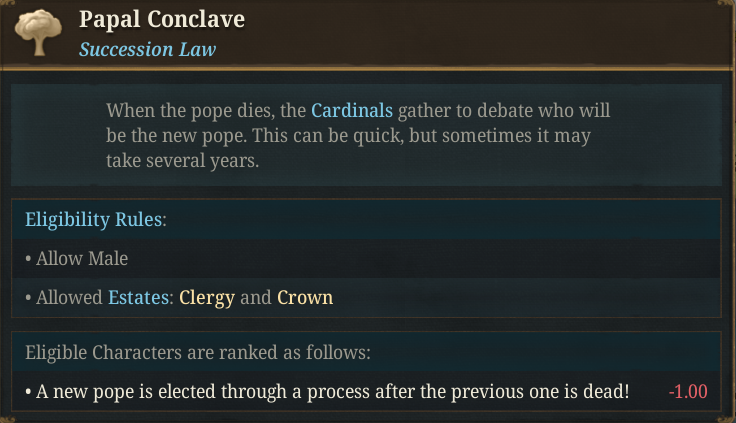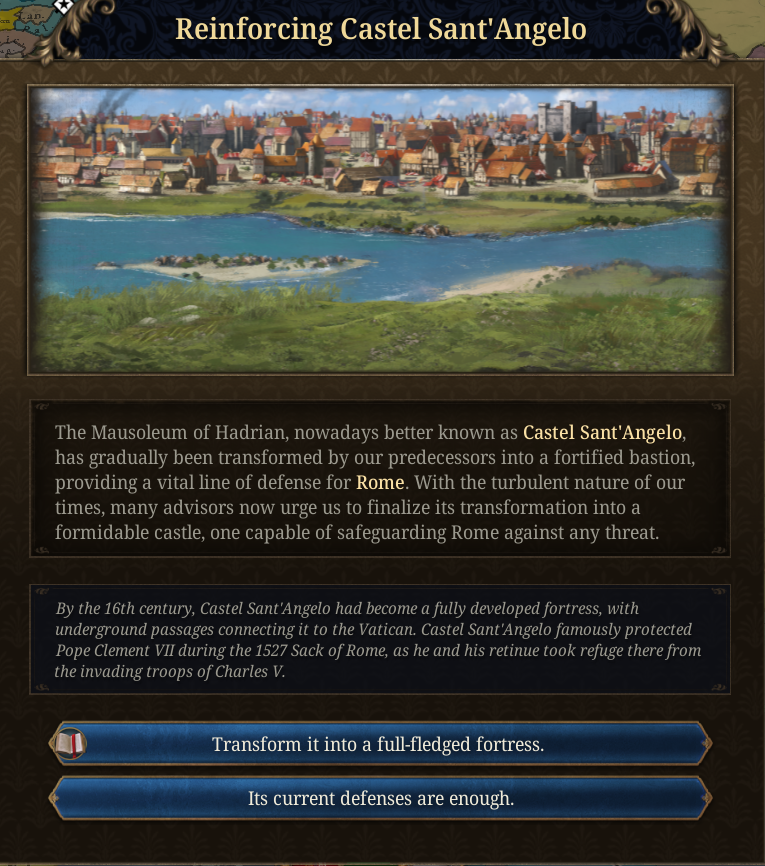Hello, and welcome to another session of our Tinto Flavour. This week we are continuing with the Christian Easter feel by taking a look at the Papal States.
Let’s look at the country directly:

And here are the lands they have, taking into account that their capital is in Avignon, not in Rome.

They start with a special government reform, unique to the Papacy:

And they also have some special privileges, representing their division between their French and Italian holdings:


And also a unique policy:

They also have a work of art:

And here are some of their unique advances:




One particular characteristic of the Papacy is that their succession is not like the rest of the countries. As such, they have a special succession law:

That makes it so that when a Pope dies, the country enters into a Papal Conclave Regency, and eventually it will be resolved with an event firing, where the player will be able to choose between some of the cardinals available.


Here are some more events available to the Papacy:

Giving access to this special building:

And events for some special individuals:



There’s also some events about some famous "refurbishings":




… and much more, but that is all we will show for today. Next week we will go to the military branch of Christianity by taking a look at the Military Orders of the Teutonic & Livonian Orders and Knights Hospitallers. See you there.
Let’s look at the country directly:

As usual, consider all art as WIP.
And here are the lands they have, taking into account that their capital is in Avignon, not in Rome.

They start with a special government reform, unique to the Papacy:

And they also have some special privileges, representing their division between their French and Italian holdings:


And also a unique policy:

They also have a work of art:

And here are some of their unique advances:




One particular characteristic of the Papacy is that their succession is not like the rest of the countries. As such, they have a special succession law:

That makes it so that when a Pope dies, the country enters into a Papal Conclave Regency, and eventually it will be resolved with an event firing, where the player will be able to choose between some of the cardinals available.


Here are some more events available to the Papacy:

Giving access to this special building:

And events for some special individuals:



I’m sure this last one will have no repercussions whatsoever…
There’s also some events about some famous "refurbishings":




… and much more, but that is all we will show for today. Next week we will go to the military branch of Christianity by taking a look at the Military Orders of the Teutonic & Livonian Orders and Knights Hospitallers. See you there.



